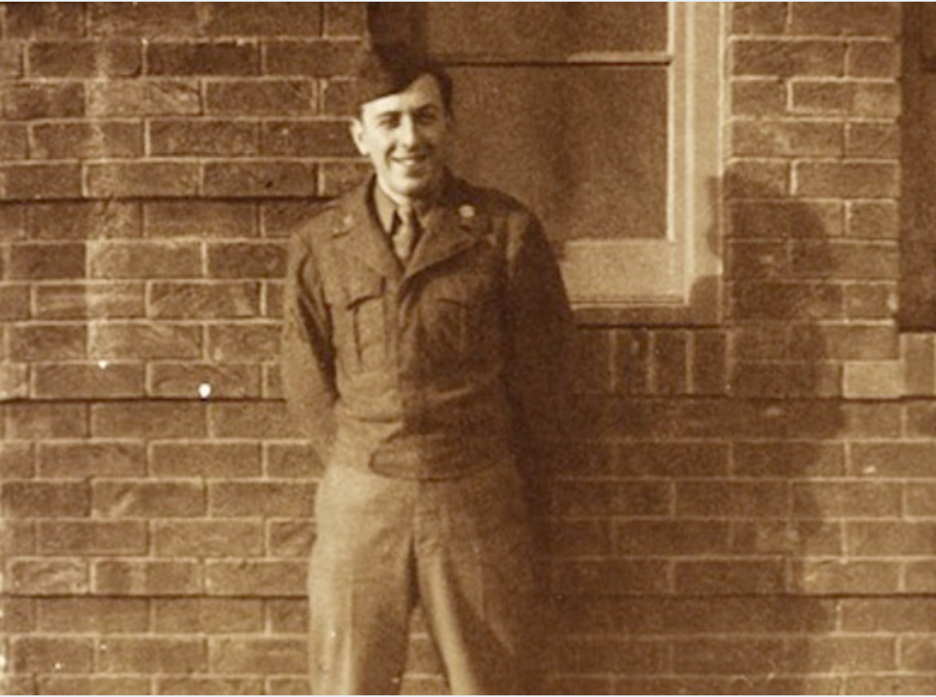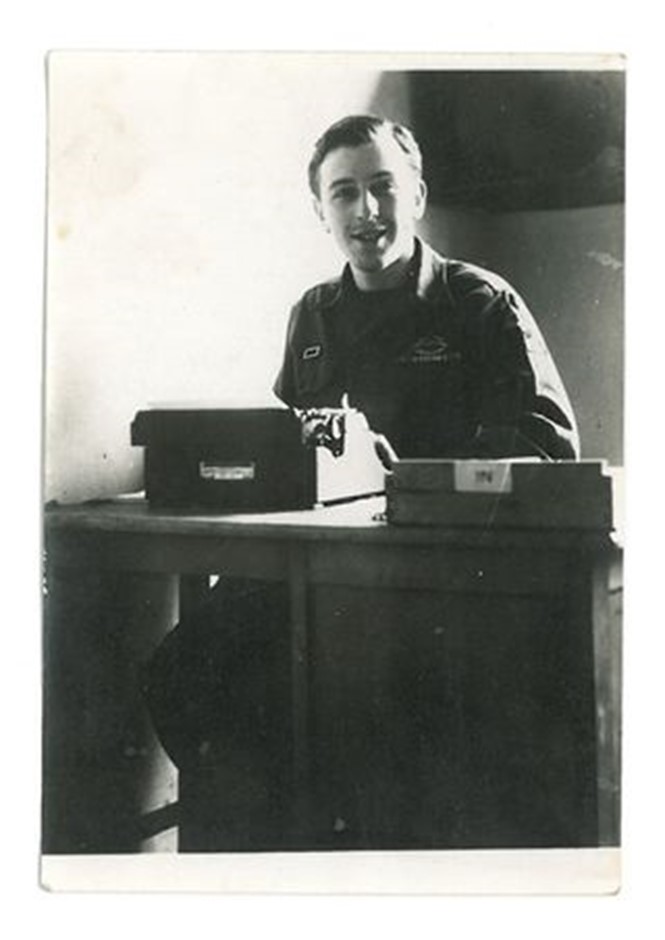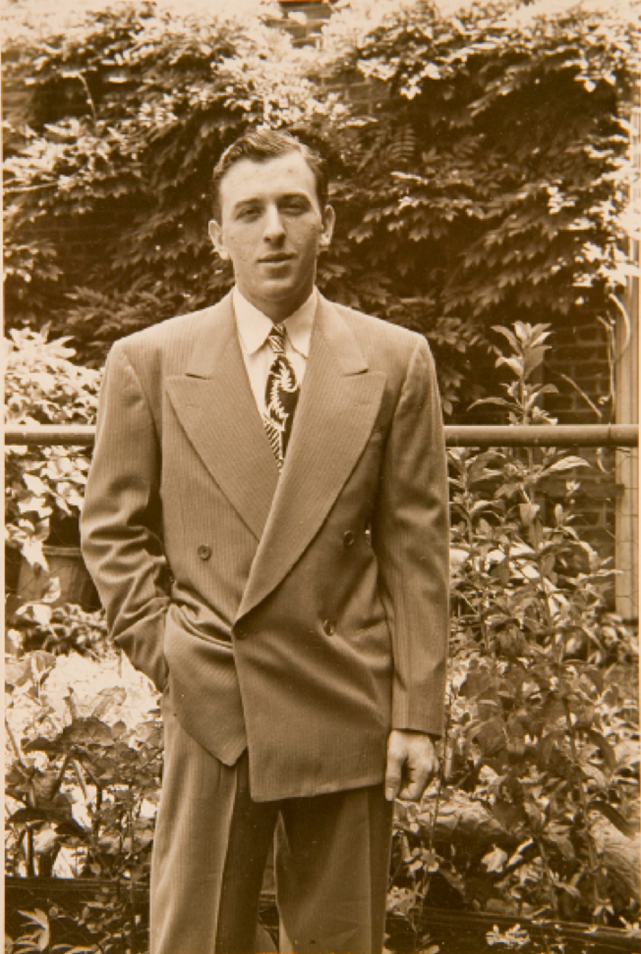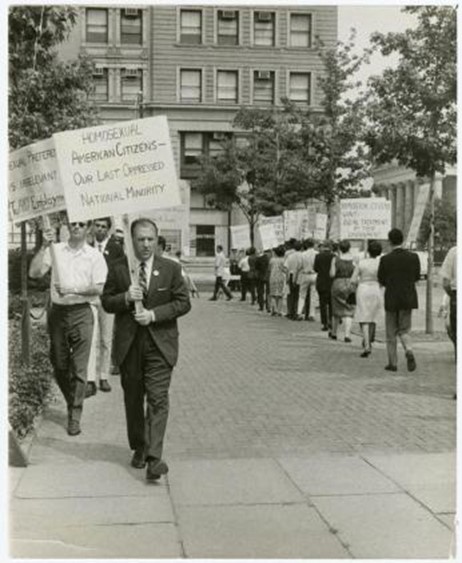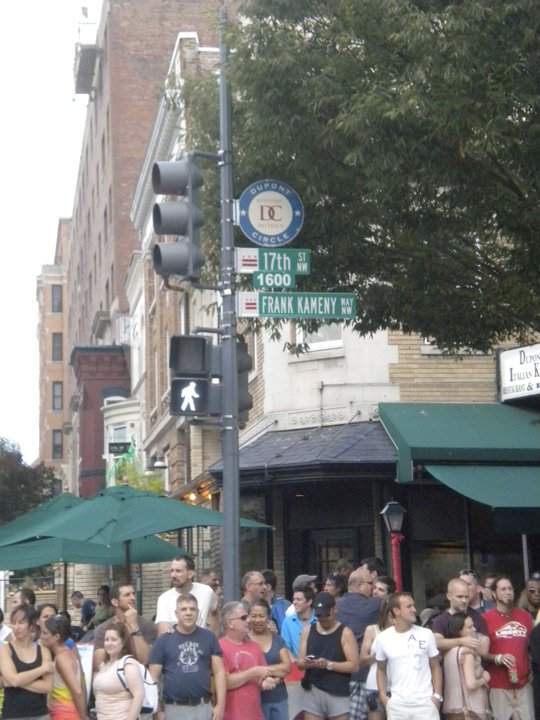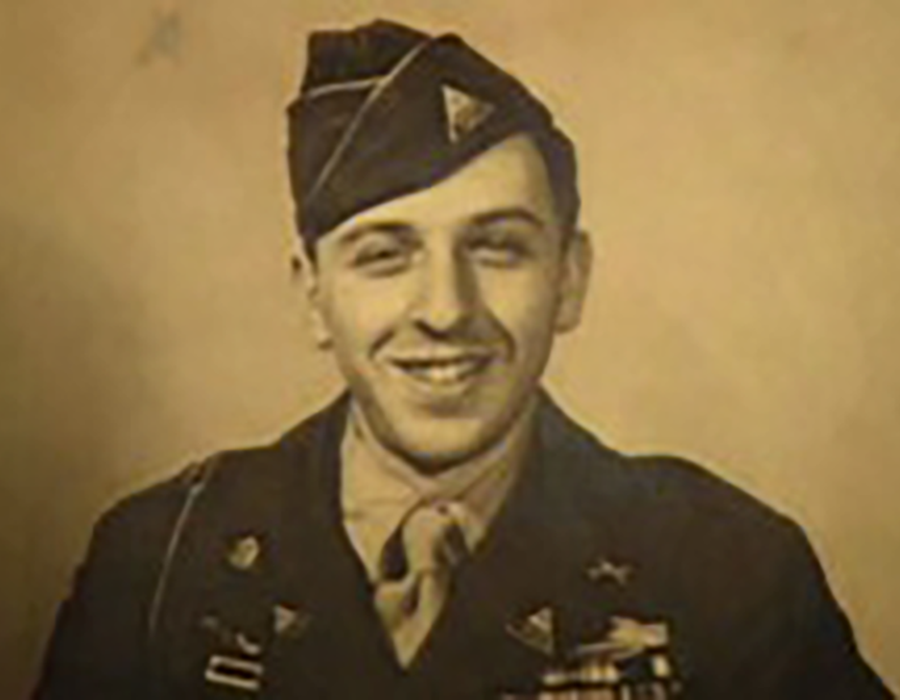
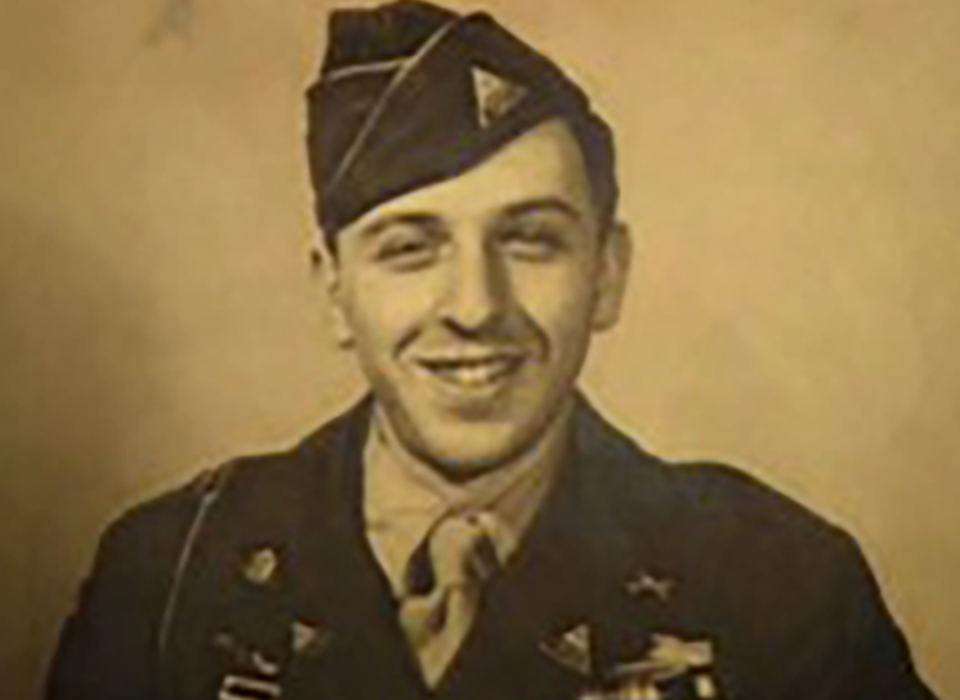
Private First Class Frank Kameny, 1943. Courtesy of the Library of Congress
“Do you have homosexual tendencies?” the officer asked Frank Kameny on the day of his induction into the US Army in 1943.
“No,” Kameny replied—as did many other gay men who fought for their country during World War II. “And that was the end of the issue for the remainder of my Army career,” he later explained in an oral history.
But that was not “the end of the issue” for Kameny.
He embodied the Greatest Generation, seeing fierce combat during the war and returning home to use his GI Bill benefits to graduate from Harvard University with a PhD in astronomy before working for the federal government.
Despite his service to his country, Kameny repeatedly faced discrimination because of his sexuality—but not without a fight.
Kameny in WWII
Kameny was only 16 years old and working toward his degree in physics from Queens College in New York City when the Japanese attacked Pearl Harbor. Two years later, and three days before his 18th birthday, Kameny enlisted in the Army on May 18, 1943. He wanted to take advantage of the Army Specialized Training Program (ASTP) that allowed enlisted men to take college courses in engineering, math, and the sciences. Kameny departed from Camp Upton on Long Island on September 20, 1943, to report to Fort Benning, Georgia, for basic training. Thirteen weeks later, Private First Class Kameny boarded a train for Urbana-Champaign, where he began studying mechanical engineering alongside other ASTP enrollees at the University of Illinois.
But his college days were short-lived; the Army decided he would be of more use on the front lines in Europe in February 1944. One week, he was sharing a room with two other ASTP students, and the next he was on a train bound for Camp Polk, Louisiana, for more advanced training. Kameny was assigned to the 58th Armored Infantry Battalion of the 8th Armored Division as an M1 mortar crewman. In October 1944, he left from New York City on a choppy three-week voyage to Britain, “zig-zagging” across the Atlantic to avoid German submarines, and arrived at Southampton.
Kameny and his fellow soldiers spent weeks at the Tidworth Camp alongside troops from the 8th Armored Division until, as he explained, “the Battle of the Bulge … bulged,” and more men were needed in the Ardennes region. He set sail for Cherbourg, France, from Southampton, and his division stayed in Normandy for a few days before being ordered east toward the Alsace-Lorraine region in January 1945. A month later, Kameny and his fellow soldiers replaced British and Canadian troops and reached German-occupied Roermond in Belgium where he first encountered combat.
At Roermond—there had been some fighting there—and we came into the main square in Roermond and there was a HUGE pile of furniture there, and lying on top of the furniture was a drawer, a desk drawer…and written on it in blue chalk in a British script, it said, ‘THE ENEMY IS 500 FEET AHEAD.’ And we listened, and we heard the enemy. And that was our introduction to actual combat.
Kameny stayed at Roermond for another two weeks and engaged in daily skirmishes with German troops. “It started out all very nice, and very courteous,” he explained. “About five to five every afternoon, we would fire over on the Germans, and at five o’clock the Germans would fire back at us, then everybody would have tea and that was the end of that day’s hostilities.”
After Allied troops secured Roermond through British bombing and American liberation of the city, Kameny’s division pushed into the Ruhr Pocket in April 1945. When the war in Europe ended in May, Kameny was transported to Landshut, Germany, where he was transferred to the 4th Armored Division and received a clerical assignment. A few months later, he traveled to an Army-created university in Shriveham, England, where he took courses until he could return home in late 1945.
After the War
Once back in the United States, Kameny was discharged from the Army in March 1946 and set his sights on finally finishing college. He used the GI Bill tuition assistance to graduate from Queens College with his bachelor’s degree in physics in 1947. The following academic year, Kameny enrolled in the graduate program in astrophysics at Harvard University and received his PhD in 1956. After graduation, Kameny traveled across America, picking up teaching jobs at various colleges and universities before settling down in Washington, D.C., to teach at Georgetown University.
Kameny did not stay at Georgetown long. In July 1957, while tensions between the Soviet Union and the US increased, the Army Map Service hired Kameny to create astronomical maps used to guide missiles. Kameny enjoyed the work and was happy to have a career that was fulfilling and allowed him to continue to serve his country.
The federal government, however, looked less favorably upon Kameny’s service and valuable skills.
In October 1957, the Army Map Service fired Kameny because he was gay.
While on a visit to San Francisco for an astronomy conference in 1956 before he worked for the government, police arrested Kameny and another man for “lewd” conduct in a bus terminal. Kameny cooperated with the police, pleaded guilty to the charges, and paid a fine, hoping that the incident would not harm his professional career.
All was well for Kameny until his arrest caught up with him one year later. His supervisors at the Army Map Service discovered his past charges when the US Civil Service Commission received copies of his arrest and called him back to Washington, D.C., while he was on a work trip in Hawaii. The Army Map Service conducted an investigation into Kameny’s sexuality, and an investigator questioned Kameny: “Information has come to the attention of the US Civil Service Commission that you are a homosexual. What comment, if any, do you care to make?”
When Kameny refused to answer, the investigators presented evidence that he had lied on his security clearance form. Kameny had mischaracterized the charges from the San Francisco incident, citing an arrest for “disorderly” as opposed to “lewd” conduct. In response, the Army Map Service fired Kameny and revoked his security clearance.
It would be impossible for Kameny to find work for the government without that clearance and with the stigma of his arrest for “lewd” behavior. His career as a talented astrophysicist was over, but he quickly turned to another cause: gay rights.
Kameny as LGBTQ+ Activist
At the height of Senator Joseph McCarthy’s hunt for Communists in the 1950s during the Cold War, the “lavender scare” also targeted thousands of federally employed women and men suspected of homosexuality. McCarthy argued that gay men and lesbians suffered from “mental illness” and were more prone to Soviet blackmail for security secrets in return for not exposing their private romantic lives to friends, family members, and employers.
Kameny refused to give in and protested his termination and the discrimination he and other gay men encountered, earning the title “Father of the Gay Rights Movement.” In 1959, he filed an unsuccessful suit against the Secretary of the Army for wrongful termination. He also joined other activists in creating the Mattachine Society, a gay rights organization. An impactful public speaker, Kameny became President of the Washington, D.C., chapter of the Society in 1961 and continued to pursue court cases against the federal government, serving as a paralegal for gay Americans looking to fight discrimination.
One of Kameny’s proudest achievements was working with psychiatrists to revoke homosexuality’s classification as a mental illness. He and other allies successfully pressured the American Psychiatric Association to remove homosexuality from the second edition of the Diagnostic and Statistical Manual of Mental Illnesses in 1973. It was now illegal to deny employment to gay men and women because of mental illness defined by their sexuality. Two years later, the US Civil Service Commission reversed its policy of refusing to hire homosexuals.
Long into his life, Kameny also worked tirelessly for gay Americans who wanted to serve in the military as he did during World War II. He was passionate about making sure that gay men were not dishonorably discharged from the military. “If you don’t want a man, let him go, but don’t throw him on the trash heap for the rest of his life!” he later exclaimed, recalling his own loss of security clearance and how it ended his career as a physicist. [13] He also served on the Washington, D.C., draft board and supported the repeal of the “Don’t Ask, Don’t Tell” policy that denied openly gay Americans the right to serve their nation.
In September 2010, President Barack Obama repealed “Don’t Ask, Don’t Tell,” and when he did, Kameny was front and center in the audience. One year later, Kameny passed away at age 86.
A veteran and patriot, Kameny spent his life fighting for Americans to be able to serve their nation regardless of their sexual orientation or identity. Kameny and his legacy are honored in the Prosperity and Change gallery in The National WWII Museum’s Liberation Pavilion.
